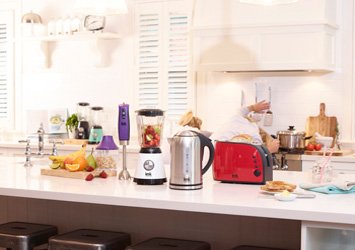11 Things You Should Never Plug Into a Power Strip
Faithful readers will recall I’ve written on this subject in the past. Today, with proof that “teaching teaches the teacher,” we expand on things we should never plug into a power strip.
Whether you live in a house, apartment, condo, mobile home or dorm room, having enough electrical outlets to handle all of the accessories, appliances, and tools you need can be a challenge. And that’s when knowing how to use a power strip device safely comes in handy.
While one of these devices can offer a reasonable solution for too few outlets, it’s a mistake to rely on power strips too much. Or to use one incorrectly. For safety’s sake, never plug the following items into a power strip.
NO. 1: HAIRDRESSING APPLIANCES
You need ’em hot and ready to go, which makes a power strip on the bathroom counter pretty much a godsend when you have only that one outlet. Here’s the problem with that: Hairdryers, curling wands and flat irons are required to produce heat, which means they pull large amounts of amperage to get them good and hot. Plugging them into a power strip is just asking for trouble. These types of hairdressing appliances must be plugged directly into a wall outlet — preferably one with a ground-fault circuit interrupter breaker to avoid danger should those tools accidentally be exposed to water.
No. 2: REFRIGERATOR AND FREEZER
These appliances pull too much current for a power strip because they are continuously cycling on and off. That will quickly overload a power strip. These items need to be plugged directly into a wall outlet dedicated solely to that appliance. If you plug other appliances into that same outlet, provided it’s a duplex, you run the risk of tripping a breaker.
NO. 3: COFFEE MAKER
It seems pretty lightweight to heat up water, right? Not so fast. Most coffee makers need a good deal of amperage to turn gloriously roasted coffee beans into a hot beverage — more than a power strip can guarantee to deliver. Make sure you plug the machine directly into a wall outlet.
NO. 4: TOASTER
Here’s the clue: It has exposed wires inside those slots that heat up to become red-hot. It takes a lot of current to fire up those wires, which can easily overload a power strip. So, no, do not plug your toaster into an extension cord or power strip. Ditto for your toaster oven.
NO. 5: SLOW COOKER
I agree this is counterintuitive; wouldn’t you think a slow cooker uses microscopic bits of power? In this case, it’s not the amount of amperage but the length of time requiring continuous power. A power strip cannot guarantee to deliver that kind of energy. Plug the slow cooker safely into a wall outlet before you set it and forget it.
NO. 6: MICROWAVE
I still think of my microwave oven as a miracle for food preparation, thawing, cooking and reheating in a fraction of the time it takes a conventional oven. However, such incredible activity demands more energy than what a power strip can deliver. Similar to a traditional electric oven, your microwave oven will forever require its own dedicated wall power outlet.
NO. 7: SPACE HEATER
Most portable heaters consume 1,500 watts of energy on their high settings. Connect one to a power strip and it becomes potentially hazardous due to allowing them to run for an extended period. Although most portable heaters come with built-in safety features that automatically turn off the unit if it starts to overheat, this does not safeguard the power strip itself from overheating. That can quickly lead to a fire!
NO. 8: AIR CONDITIONER
Similar to heaters, portable air conditioners are designed to cycle on and off, consuming a significant amount of electrical current, especially during the startup process. This can put a strain on a power strip, leading to either a tripped circuit breaker or dangerous overheating. Let’s just agree that it is wise to always plug these appliances into a dedicated outlet.
NO. 9: BLENDER
The size of an appliance doesn’t determine if it’s safe to plug it into a power strip. Certain blenders, like those manufactured by Vitamix and Blendtec, rely on powerful motors to process tougher foods, using as much as 1,500 watts of power. That’s on par with space heaters, toasters and air conditioners. Safety dictates to always plug a blender directly into a kitchen GFCI outlet (that thing is dealing with liquids and electricity, which poses the possibility of a short circuit) and never into a power strip, to prevent electrical hazards and keep your kitchen workspace secure.
NO. 10: WASHING MACHINE
I’ve seen it and hope to never see it again — a washing machine plugged into a power strip! The majority of washing machines have a maximum power consumption of around 1400 watts, which brings them dangerously close to the maximum load capacity of most power strips. Since washing machines are typically left unattended while they run for an extended period, there’s a risk of overheating the power strip during the cycle.
To avoid potential hazards, connect the washing machine directly to its designated wall outlet. This gives you a safe and reliable power supply without risking the overheating and potential dangers associated with using a power strip.
NO. 11: ANOTHER POWER STRIP
Power strips do not play well together. While it might seem smart to plug one power strip into another as a way of multiplying the number of outlets available, it’s really dumb, super dangerous and violates every fire safety code out there.




